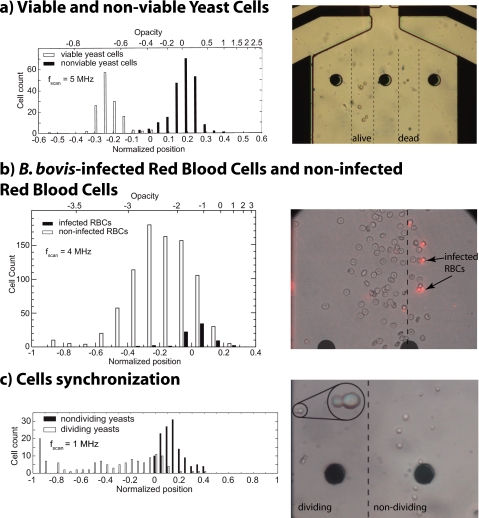Figure 3.
Sorting applications: (a) sorting of viable and nonviable yeast cells; low frequency signals are set at 60 and 90 KHz, respectively, on both electrode arrays to focus all cells toward a common equilibrium position. Adding a high frequency signal set at 5MHz actually performs the sorting of viable and nonviable subpopulations. (b) Enrichment of B. bovis parasitized red blood cells; one side of the electrode array a low frequency signal of 90 KHz is applied and a combination of 60 KHz and 4 MHz signal is acting from the other side. This signal combination gives the best results as an enrichment of infected cells on one side of the channel and a population almost free of infected cells on the other side. (c) Separation of yeast cells in division. The superimposed high frequency signal (1 MHz) on side of the electrode array exerts stronger pDEP on dividing yeasts compared to the nondividing ones. The dividing cells are spread over a large portion of the outlet channel due to large dispersions in size and dielectric properties. However, a subpopulation of the yeasts undergoing division seems more attracted to the high frequency side than the average, probably related to one specific stage of the cell cycle.

